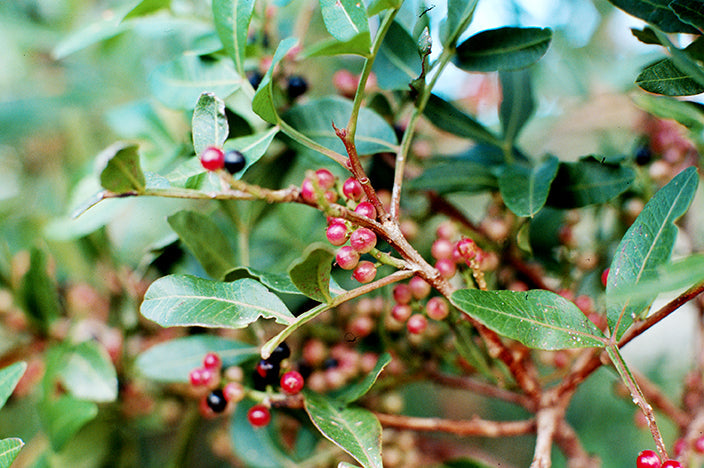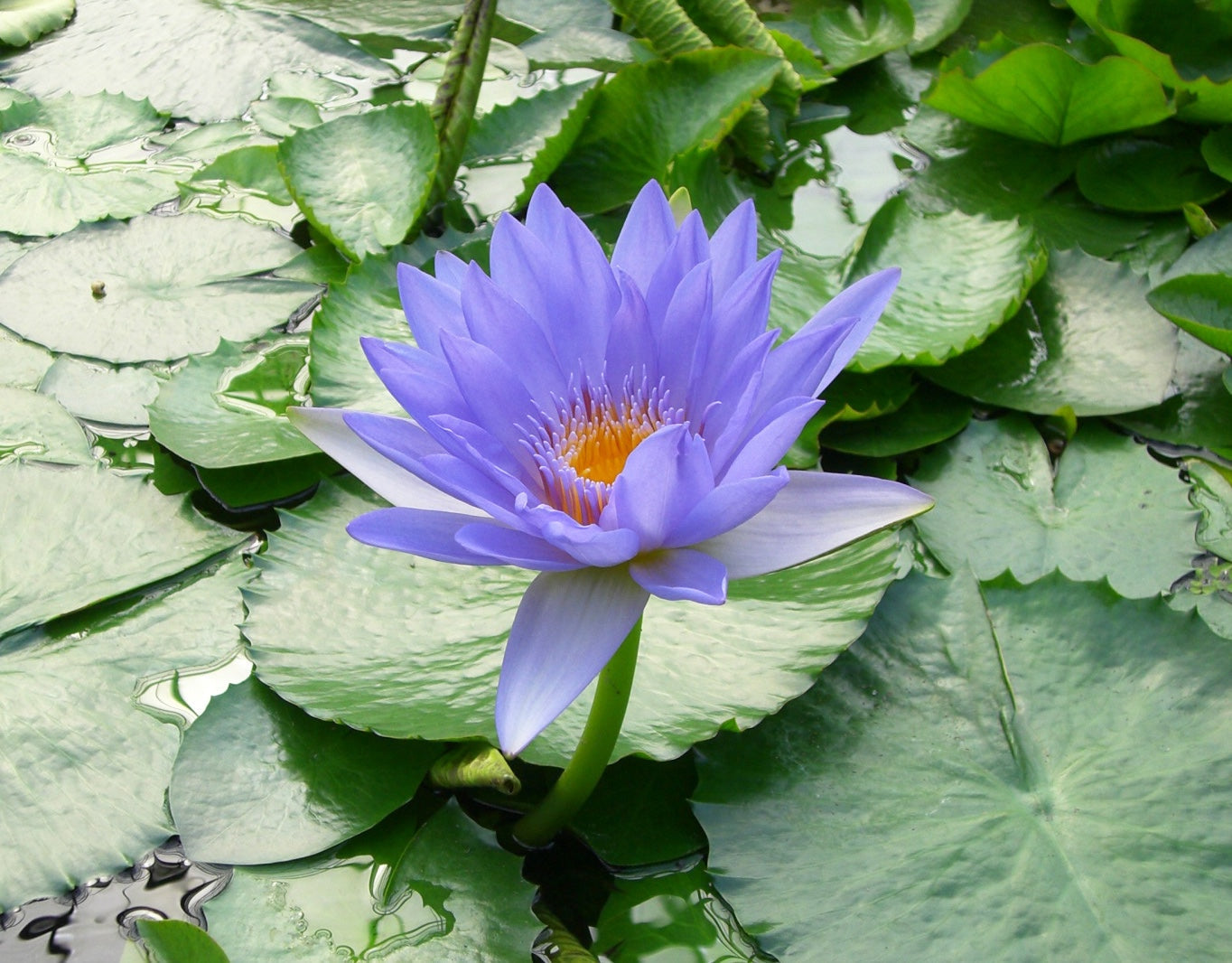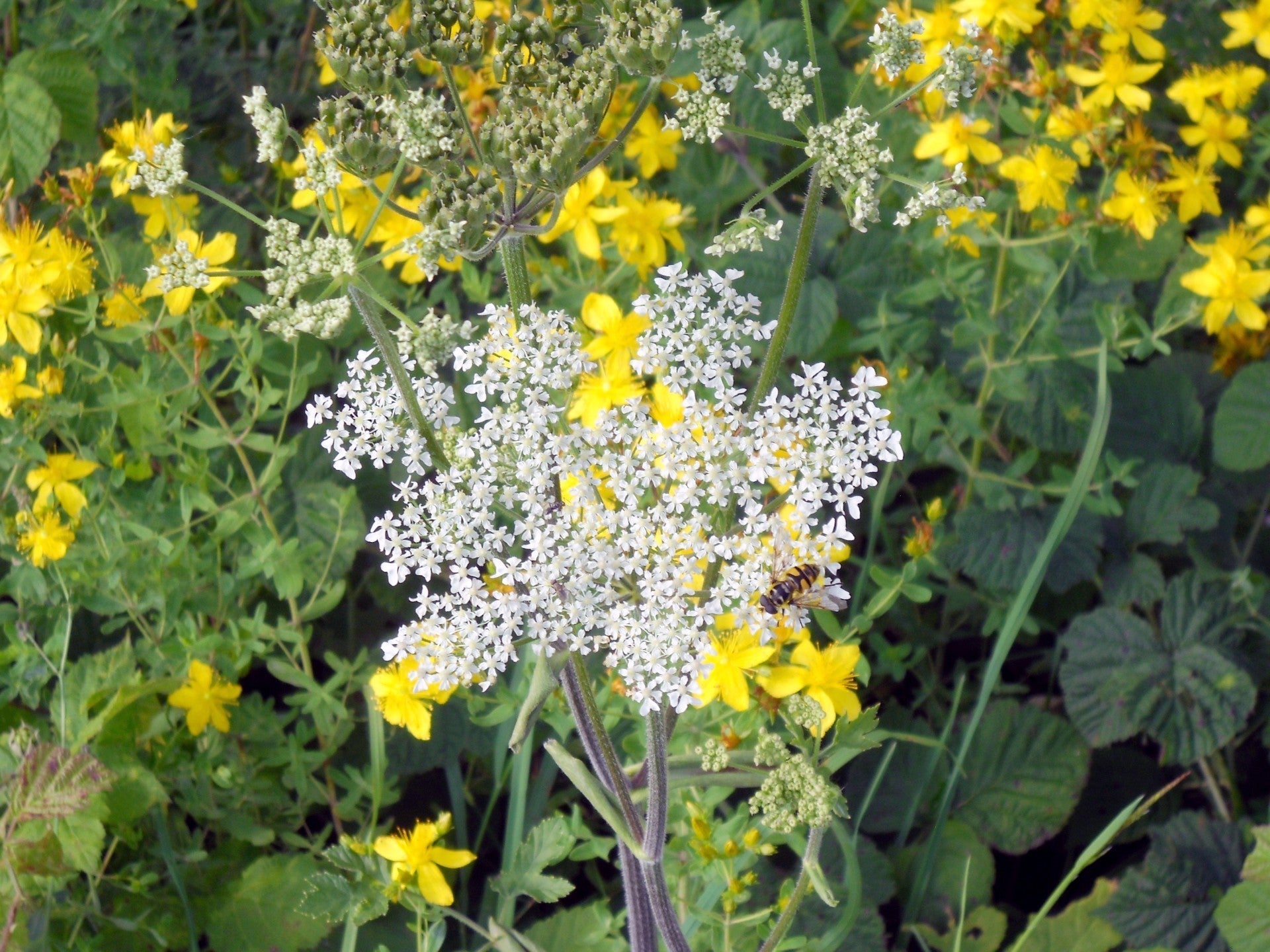While we all enjoy our Fine Lavenders and utilize the stunning effects of Helichrysum every once in a while, it is exciting to explore the more exotic offerings the Asian flora has to offer. Following are some remarks about our interesting exotics.

Hinoki
The Hinoki tree has been revered in Japan for a long time. Since the trees grow straight up and since the wood is extremely resilient and stable plus it has a warm pleasant fragrance, it has been used in the construction of temples. The oils from the different Chamaecyparis species offer to indulge in some highly unusual and idiosyncratic wood fragrances. Other members of this genus are Benihi (Chamaecyparis formosesis) and Taiwan Incense Cedar (Calocedrus macrolepsis.)

Zanthoxylum alatum
The Genus Zanthoxylum It is not uncommon to see essential oils of different Zanthoxylum species on supplier lists. But there is not too much awareness of the peculiarities associated with this genus as far as aromatherapy is concerned. Zanthoxylum alatum contains a large proportion of linalool and “l’aromathérapie exactement” calls it a very valuable therapeutic agent. Its most distinctive main component may be Methyl cinnamate, which gives it a pleasantly spicy aroma and contributes to its anti-arthritic properties.
Zanthoxylum alatum apparently is synonymous for Zanthoxylum armature var. armature. Some of the best comments about this genus are found – as often – on G. Katzer’s Spice pages (http://gernot-katzers-spice-pages.com/ engl/Zant_pip.html). There are instructive photographs of the different fruits along with their botanical names.
Xanthoxylum, known as Chinese wild Pepper is grown for its pungent fruits and it is closely related to Sichuan Pepper and American Prickly Ash. The oil consists mainly of monoterpenes. It can be used for indications such as insect bites, skin infections, wounds, arthritis, joint and muscular pain, neuralgia, rheumatism, sprains, dyspepsia, indigestion, headache, nervous tension and migraine. It presents an invitation to experiment with its warm, woody and spicy odor characteristics, which are faintly resembling to Rosa canina. The dryout is deeply floral and its tenacity makes it interesting in woody, floral or aldehydic fragrances.
Press here to discover Zanthoxylum alatum

Cyperus Root
Cyperus Root oil, although originating from India is extensively referenced in the old Chinese Classics. Following are some comments restated in their typical TCM diction:
Cyperus in Chinese Medicine
.....taste sweet, light cold. Main for chest heat drive, nourish hair and skin, benefit people after long taken period, nourish qi, grow beard and eyebrows.
(Ming Yi Bie Lu)
....smells light cooling, taste sweet, sure the Yin herb among the Yang Herbs.
(Teng Ye Ben Cao)
....get rid off heat in chest, nourish skin and hair, benefit qi after long years taken, grow beard and eyebrows. Later people apply it for treatment of menstrual blood demise, thus this property not identified and noted in Ben Cao.
(The Classic of Herbal Medicine)
Good for treatment bladder, stomach qi stagnation, depression sorrow and unhappiness, lack of appetite, skin itch, slimming day by day, heart broken. It is the qi spice for blood. Recipes and formulas use it to treat blood demise, thus benefit qi and stop blood. Similar as Ba Dou, good for discharge and diarrhoea, stool obstruction.
(Ben Cao Tu Jing)
Press here to discover Cyperus Root

Borneo Camphor
Borneo Camphor (Dryobalanops aromatica) has been a celebrated fragrance and pharmaceutical in the Tang Dynasty and probably earlier. Notwithstanding its name the main component of the oil is Borneol. Borneo Camphor should not be confused with Camphor oil from the Cinnamomum Camphora tree. Borneol is one of the most precious terpene alcohols with regard to its activities vis a vis our immune status. When gamma globuline levels are too high leading to chronic inflammation borneol has been shown to reduce gamma globuline excess.
In connection, to immune over reactions caused by current pandemic viruses, it has been shown to inhibit over expression of IL - 6 and similar proteins helping to prevent cytokine storms.
However, Long Nao’s Chinese history is most interesting in its own right. Its Chinese name means Dragon’s Brain indicating its powerful effect on brain and nervous system. In Chinese Medicine it is credited with powers to remedy emergencies such as bringing one back from states of shock, delirium, loss of consciousness or heart failure.
Press here to discover Borneo Camphor

Javanese Turmeric
Curcuma xanthorrhiza is commonly called Javanese Turmeric or in Javanese: Temu Lawak. It embodies the broad spectrum of healing properties attributed to the Turmeric genus. While the distinction between Turmeric (Curcuma longa) and Javanese Turmeric (Curcuma xanthorrhiza) often seems unclear, the essential oils are quite distinct. C. longa contains a large proportion of anti-wrinkle turmerone whereas C. xanthorrhiza contains xanthorrhizol, shown by western science to display valuable anti-tumor properties.
In Java this Turmeric is used to treat liver damage, hypertension and diabetes. Javanese Turmeric contains a sizeable proportion of the valuable xanthorrhizol. The pharmacological supply trade charges $150 for 1 mg of the compound. 5 ml of the essential oil cost approximately $10 and contain approximately 1 - 1.5 gr of xanthorrhizol. The isolated or syntheic compound is 15 000 times as expensive as the natural!
Press here to discover Javanese Turmeric

Zedoary
Rhizoma Curcuma belongs to the Zingiberacea family, which is composed of about 70 species of rhizomatous herbs at home and abroad, with approximately 20 species existing in China. In China, it is traditionally used for the treatment of dyspepsia, flatulence, menstrual disorders, fever, and cough. Zedoary’s extract have analgesic, antitumor, antimicrobial, and antiallergic activity. Germacrone is a main bioactive constituent found in Zedoary oil which is extracted from Curcuma zedoaria Roscoe.
The Germacrone presents extensive bioactivities including antiulcer, antiinflammatory, antidepressant, vasodilator, antibacterial, choleretic, antitussive, antitumor, antifungal and hepatoprotector effects. Zedoary oil found attention only recently as an agent to ameliorate arthritic pains. In the Far East it is used as analgesic, anti-inflammatory, digestive, sedative and stomachic and as intestinal stimulant. It also prevents stress induced ulceration. The oil is a common additive to condiments, flavouring for liqueurs and in perfumery. Zedoary oil is another element of the universe of Turmeric species where food and spice qualities overlap with therapeutic value as with no other genus. The oil features a number of very valuable sesquiterpene components, among them the anti-tumor beta-eudesmol.





Share:
One of the most mythical oils in all of aromatherapy: Melissa
Essential OIls, Bio Authenticity and Aromatic Culture